Throughout this website you will find information about different football stadiums throughout the world but especially those in Europe.
But what about the stadiums that don’t necessarily have clubs playing in them, for example, or are in parts of the world we may not necessarily cover? Some of those are massive, like really, really, big, so shouldn’t we talk about them too?
Yes, yes we should. So we will. Right here, right now.
This is your guide to the ten largest stadiums in the world by capacity, starting with one in North Korea that Kim Jong-un says is the best ever…
Top 10 Largest Football Grounds
| Stadium | Year Built | Current Capacity | Highest Attendance | Event |
|---|---|---|---|---|
| Rungrado 1st of May Stadium |
1989 | 150,000 | 190,000 | World Championship Wrestling 1995 |
| Camp Nou |
1954-57 | 99,354 | 120,000 | Barcelona v Juventus, 05/03/1986 |
| FNB Stadium (Soccer City) |
1986-89 | 94,736 | 94,713 | South Africa V New Zealand, 21/08/2010 |
| Rose Bowl Stadium |
1921-22 | 92,542 | 101,799 | France v Brazil 11/08/1984 |
| Wembley |
2002-07 | 90,000 | 89,874 | 2008 FA Cup Final Portsmouth v Cardiff |
| Estadio Azteca |
1961-66 | 87,523 | 119,853 | Mexico v Brazil 07/07/1968 |
| Bukit Jalil National Stadium |
1992-95 | 87,411 | Unknown | – |
| Borg El Arab Stadium |
2007 | 86,000 | Unknown | – |
| Salt Lake Stadium |
1984 | 85,000 | 131,781 | East Bengal v Mohun Bagan, 13/07/1997 |
| MetLife Stadium |
2010 | 82,500 | 82,265 | WrestleMania 35, 07/04/2019 |
1 – Rungrado 1st of May Stadium – North Korea
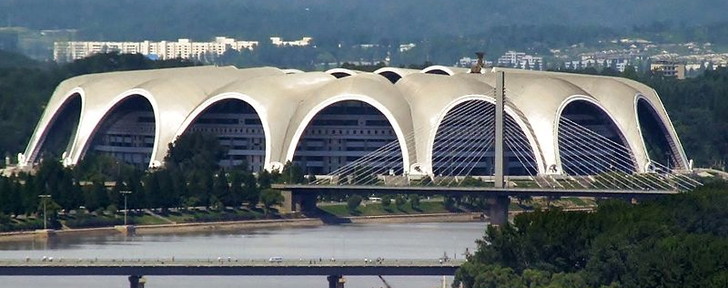
Build Cost – Unknown
In the 1990s it was claimed that the former Supreme Leader of North Korea, Kim Jong-il, picked up a golf club for the very first time at the opening of the Pyongyang Golf Complex. It contains North Korea’s only 18-hole golf course that has a par of 72. The Supreme Leader went on to shoot an incredible 38-under-par round of 34, of which eleven shots were holes-in-one.
Now far be it for us to suggest that the North Koreans make things up, but that does seem a slightly unlikely result for someone who has never played golf before to manage. As such, it’s entirely possible that the Rungrado 1st of May Stadium actually only has seating for about 150 people and the rest is made to appear larger thanks to an intelligent use of mirrors.
That’s probably not true, of course and the claim of a 150,000 capacity is a totally genuine one. As it’s located in the notoriously secretive North Korea details about the venue are difficult to come by, but what we do know is that it is, nominally, used for football matches for the likes of the North Korean national team. Mostly, though, it’s used to host things like the Arirang Festival, a gymnastics and artistic performance event. In the 1990s some members of the North Korean army who has been implicated in an attempt to assassinate Kim Jong-il were executed in a mass burning inside the ground, which is cheery.
The stadium’s capacity has remained steady ever since it opened, but the ground itself underwent a bit of a renovation between 2013 and 2015. As well as hosting the male and female North Korean football teams and the annual Arirang Festival, the stadium is also the start and end point of the Pyongyang Marathon.
2 – Camp Nou – Spain

Build Cost – 288 Million Spanish Pesetas
Camp Nou has been the home of FC Barcelona since the 24th of September 1957. Since then it has also hosted the home matches of the Catalonia national team and in 1992 it was one of the stadiums used when Spain hosted the Summer Olympics. The ground has hosted two Champions League finals and one of the semi-final matches at the 1982 FIFA World Cup.
Until 1980 the capacity was just over 93,000 but it increased to 121,749 at the start of the 1980s. In 1993 this was reduced to 115,000 then in 2005 it was reduced once more to 98,772. In 2016 it increased slightly to its current capacity of 99,354, but there are plans underway to increase it even further to 105,000 by 2021. This will include a major redevelopment of the entire stadium.
The Nou Camp has not just hosted football, either. In 1982 Pope John Paul II celebrated a mass Mass at the ground, with a congregation of 121,000 turning up. In 1983 the Spanish singer Julio Iglesias performed in front of 60,000 people. Bruce Springsteen, The Three Tenors and U2 have all also held concerts in the stadium.
3 – FNB Stadium – South Africa

Build Cost – $440 Million South African Rand
The First National Bank Stadium, better known as FNB Stadium but also called Soccer City or The Calabash, is the stadium that is used to host the home games of South Africa’s football matches and the country’s rugby games. It is also the home ground of the South African football team Kaiser Chiefs FC. It hosted the African Cup of Nations in 1996 and 2013 and also some of the games, including the final, when South Africa hosted the FIFA World Cup in 2010.
In order to get it ready for the World Cup the ground underwent a significant upgrade, including the addition of an upper tier around the stadium that increased its attendance capacity to 94,736, though it was limited to 84,490 for the World Cup because of seats needing to be reserved for the FIFA family, VIPs and so on.
On top of football and rugby the ground has also been used to host a number of high profile musicians. Neil Diamond, U2, Lady Gaga, the Red Hot Chili Peppers, Bon Jovi, Bruce Springsteen and the Foo Fighters have all played there. Perhaps the most significant event held there, however, was in 1990 when Nelson Mandela delivered his first speech from the stadium after his release from prison.
4 – Rose Bowl Stadium – United States

Build Cost – $3.85 Million US Dollars
Primarily known as an American Football stadium, the Rose Bowl is arguably the most important ‘soccer’ grounds in the United States. It hosted the final of the FIFA World Cup in 1994, the final of the FIFA Women’s World Cup in 1999, the 1984 Olympic Gold Medal Match and numerous CONCACAF and US Soccer Federation matches.
The ground opened in 1922 and is recognised as a National Historic Landmark in the US. It hosts the Rose Bowl American Football game every year and that’s where it gets its name from. In fact, the ground was initially known as either the Tournament of Roses Stadium or Tournament of Roses Bowl until it was called the Rose Bowl just before the 1923 game of the tournament.
From 1972 until 1997 the capacity was 104,091. This was lowered to somewhere between 91,136 and 92,542 for the 1998 Rose Bowl. In 2011 the attendance was 94,118. The stadium is regularly used for the BSC National Championship and the College Football Playoffs, with the Super Bowl also having been played there a number of times since 1977.
As with most major stadiums it has been used to host a number of music concerts and the like over the years. In 1982 Journey performed there, supported by the likes of Blue Oyster Cult. Depeche Mode, The Cure, Michael Jackson, Pink Floyd and The Rolling Stones have also played the stadium.
5 – Wembley Stadium – England
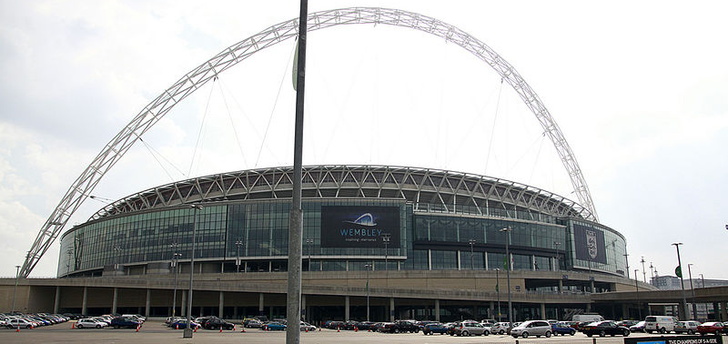
Build Cost – £947 Million
The new Wembley Stadium opened in 2007, with its official opening coming in time for the 2007 FA Cup final between Chelsea and Manchester United that the London club (Chelsea) won 1-0. It is the home of the England national football team and, as such, has hosted any number of international games over the years since it re-opened.
Its use is not limited to England matches, however. Every year it hosts the FA Cup semi-finals and final as well as the League Cup final and the FA Community Shield match. In 2011 and 2013 it was the venue for the Champions League final and in 2012 it hosted the Gold Medal Match at the Summer Olympics. It has hosted the Rugby League Challenge Cup final and NFL matches as well as numerous concerts.
6 – Estadio Azteca – Mexico
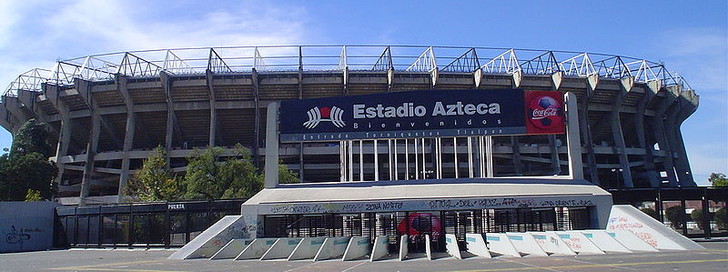
Build Cost – 260 Million Mexican dollars
Located in the suburb of Santa Ursula in Mexico City, the Estadio Azteca is the home of the Mexican national team. It is also the home ground of Club America who play in the top-flight of Mexican football. Over the years it has been used by other clubs such as Necaxa, Atlante, Universidad Nacional, Atletico Espanyol and Cruz Azul.
It is one of the most iconic stadiums in world football and was the first to host two separate FIFA World Cup finals. In 1970 Brazil defeated Italy 4-1 in the stadium, whilst in 1986 Argentina ruled the roost over West Germany with a 3-2 win there. English fans will know the ground well as it was the location for Maradona’s famous ‘hand of God’ goal in the 1986 quarter-final between England and Argentina.
The stadium hosted its first night game on the fifth of June 1966 when Necaxa welcomed the Spanish side Valencia. In 1978 and 1990 it hosted the finals of the Copa Interamericana, with the first being competed by America and Boca Juniors and the second between America and Club Olimpia from Paraguay.
As well as hosting numerous sporting events, including high-level boxing, the ground has also played host to a number of big name musicians. Michael Jackson ended his Dangerous Tour with five sold-out shows there in 1993, whilst U2 welcomed 110,000 people there in 2011. Paul McCartney performed at the stadium in 2012 in front of 53,000 and, strangely, Mexican comedian Roberto Gomez Bolaños’ funeral was held there in 2014.
7 – Bukit Jalil National Stadium – Malaysia
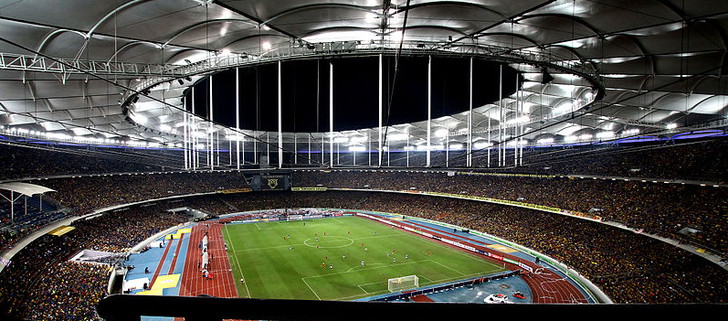
Build Cost – RM 800 Million
The Bukit Jalil National Stadium was built with the specific aim of hosting the 1998 Commonwealth Games, which took place in Kuala Lumpur in September of that year. Since then it has been the home of the Malaysia national football team.
Considered to be the best ground in Malaysia, it is often used to host major tournaments that are held in Malaysia such as the Southeast Asian Games, the ASEAN University Games and the FESPIC Games. Like most major stadiums it has also hosted music concerts for artists like Kelly Clarkson, The Corrs, Usher and Linkin Park.
As well as music concerts the stadium has hosted track and field athletic events, the Malaysian FA Cup final, the FA Premier League Asia Cup, the Champions Youth Cup final and pre-season tours for teams such as Manchester United, Chelsea and Liverpool. It was renovated in 1998 and the capacity was expanded in the same year.
8 – Borg El Arab Stadium – Egypt

Build Cost – Unknown
Given that it is one of the top ten largest stadiums in the world by capacity, surprisingly little is known about the Borg El Erab Stadium. We know it has a car park that is large enough to fit in 5000 cars, for example, but we don’t know what the highest attended match has been so far in the ground’s history. We know there is an umbrella that covers 35% of the stadium, but we’re unsure how much the stadium cost to build.
The stadium was built as part of Egypt’s bid to host the 2010 World Cup, with another five international standard grounds also planned for the same purpose. Along with the Cairo International Stadium and the Mubarak Stadium in Giza, it is one of the venues that hosts Egypt’s international football matches. Though the capacity of the stadium is 80,000, 35% of the ground’s total seating capacity is taken up by the terrace and first class stand.
The stadium was chosen to host matches in the 2009 FIFA Under-20 World Cup, although in the end it was only actually used for the opening game between Egypt and Trinidad and Tobago. A number of the FIFA delegation felt that the ground was virtually identical to the Stade de France, but FIFA’s then President Sepp Blatter, who has long been trying to extol the virtues of football in Africa, described it as ‘fantastic’, so we don’t know who to believe.
9 – Salt Lake Stadium – INDIA
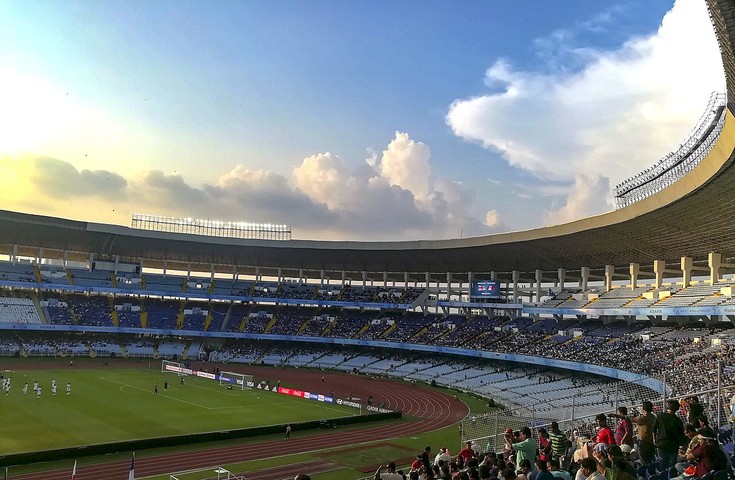
Build Cost – Unknown
Officially called the Vivekananda Yuba Bharati Krirangan stadium, the more pronounceable Salt Lake Stadium is located in Kolkata, India, and was once the largest football stadium in the world. However, semi-frequent renovations have gradually reduced the capacity while improving the quality of the seating and the facilities at the ground.
As well as being the home of the Indian National football team, Salt Lake Stadium hosts not one but three different clubs; ATK Mohun Bagan, East Bengal, and Mohammedan. It is also sometimes used for athletics events and concerts, although this is not a particularly frequent occurence.
Although not a stadium that will be well known by Westerners, it has been a regular choice for the under-17 mens and womens World Cup matches, and the stadium has also hosted Bayern Munich when they played a friendly to mark Oliver Khan’s official farewell from the club, as well as welcoming Lionel Messi and co during a friendly between Argentina and Venzuela in 2011.
10 – MetLife stadium – usa
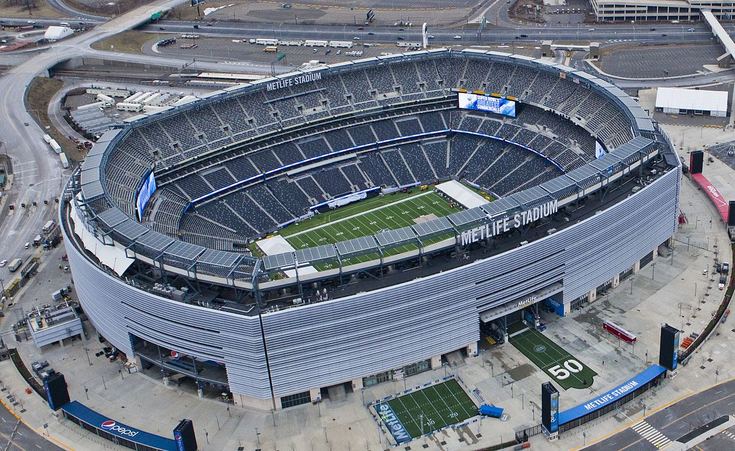
Build Cost – $1.6 Billion US Dollars
Despite being the home of two NFL teams, the New York Giants and the New York Jets, the MetLife stadium is multi-puprose and is used for international football matches, the first of which being the 2010 fixture between Mexico and Ecuador. The majority of the time though, the games played here have been friendlies or exhibition matches.
Nonetheless, teams such as Brazil, Chile, Columbia, and Argentina have all played here, and of course the USA team are no strangers to the ground. The only competetive fixutre played at the stadium was the Copa America Centenario, a one off competition staged to celebrate the centenary of the Copa America. This will change in 2026, however, when the metLife Stadium will host the final of the World Cup.
The stadium is famed for having excellent sightlines from all seats, and thhe clever design means the pitch size can be quickly changed to meet FA regulations by mechanically retracting some of the corner seating at ground level.
Having such a large capacity also makes the MetLife perfect for concerts, and some absolutely huge stars of the music world have performed there, including: Guns n Roses, Taylor Swift, Bon Jovi, U2, Drake, Fatboy Slim, Aviici, Calvin Harris, Bruce Springsteen, Beyonce and Jay Z, AC/DC, Paul McCartney, Metallica, Ed Sheeran…. and One Direction.
Highest Attendance Matches in History
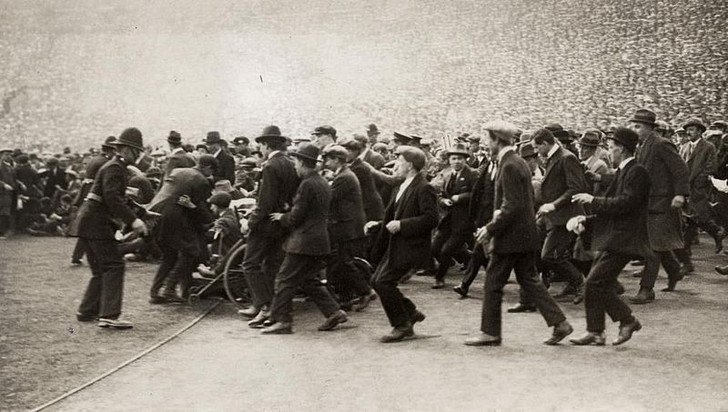
Officially the most attended football match in the world was the final of the World Cup in 1950. Brazil, the host nation, had made it all the way to the final where they were due do play Uruguay in the hopes of being crowned World Champions. Consequently 173,850 people crammed themselves into the Maracanã on the 16th of July 1950, setting a record for the most paying customers to attend a football match.
Sadly for the near 200,000 people that made it there Brazil lost the game 2-1, leaving the home nation nearly as devastated as they were in 2014 when Germany beat them 7-1 in the semi-final of the tournament. There are also claims that as many as 210,000 might have been inside the ground, with plenty ‘bunking in’ without a ticket.
Wembley Stadium also has a similar story from its history. The original version of the ground opened in 1923 and the first ever match to be held there was that season’s FA Cup final between Bolton Wanderers and West Ham United. Nicknamed the White Horse final, the game was more popular than the FA Could ever have envisaged. For reasons known only to themselves they decided to make it a non-ticketed event, only for the intrigue about a new national stadium to see an estimate of more than 300,000 people turn to watch the game, with about another 60,000 locked outside. It remains the highest ever ‘unofficial’ attendance at any non-racing sports event. FA Cup finals have been ticketed ever since.
